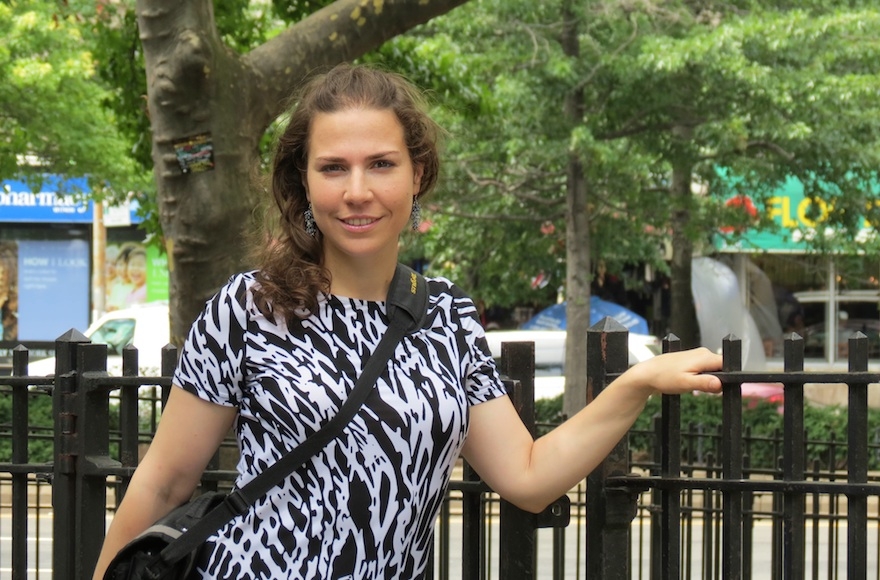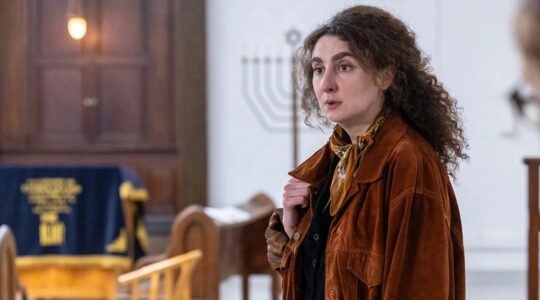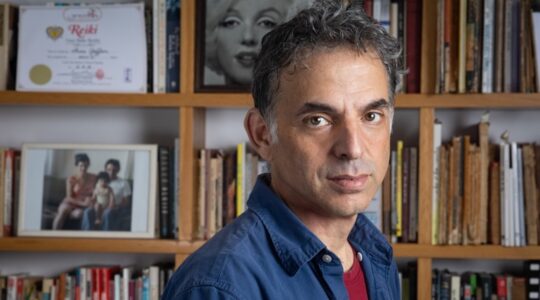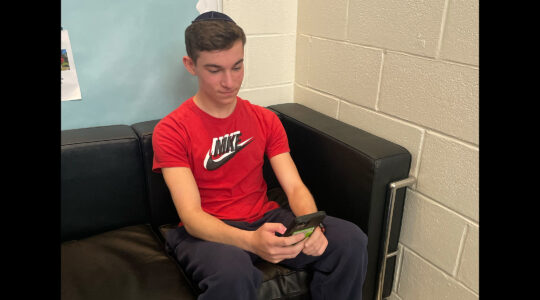(JTA) — In recent years, a spate of memoirs have been written by those who have left haredi Orthodox Judaism. Titles that have had mainstream publishing success include books by Shulem Deen (“All Who Go Do Not Return”), Deborah Feldman (“Unorthodox: The Scandalous Rejection of My Hasidic Roots”) and Leah Vincent (“Cut Me Loose: Sin and Salvation After My Ultra-Orthodox Girlhood”).
Interest in the ex-frum memoir continues, as demonstrated by the release of three new titles to join the group. Leah Lax’s “Uncovered: How I Left Hasidic Life and Finally Came Home” (She Writes Press), Judy Brown’s “This is Not a Love Story” (Little Brown) and Chaya Dietsch’s forthcoming “Here and There: Leaving Hasidism and Keeping My Family” (Schocken) are introspective tales of survival and, ultimately, of triumph.
Collectively, these books could be described as “Off the Derech,” or OTD, literature. In Hebrew, “derech” means “path”; the phrase “Off the Derech” — once a derogatory term used to describe Orthodox youth who experimented with secularism — has been reclaimed recently by some ex-acolytes who have forged their own path in the world.
The OTD experience is undergoing intense scrutiny since the suicide of Faigy Mayer, an ex-Hasid who jumped 20 stories to her death in Manhattan last month. Mayer left the Belz Hasidim when she was 23 and had been on her own for five years. Media reports speculated that she was mentally ill, estranged from her family and struggling to survive in the secular world.
READ: Shulem Deen: Faigy Mayer’s suicide is a Jewish tragedy, not just an Orthodox one
For some, Mayer’s death may appear to be a cautionary tale about those seeking to leave their haredi Orthodox sects. For others, the media spotlight may have generated intrigue about these secretive communities. Whatever your perspective, the new OTD memoirs provide a compassionate and compelling way to start making sense of the tragedy beyond the headlines.
“Uncovered” captures the irony and pain of how prescriptive yet predictably comfortable a haredi life can be. Lax offers a front-row seat to the joys, perils and overall hardship of Hasidic life, where running a large, busy household and undertaking the scrupulous observance of labor-intensive holidays always fall to the mother.
But as the subtitle implies, her story is distinct from the pack of recent OTD memoirs. Lax grew up secular in Houston in the 1960s and ’70s, discovering Lubavitch Hasidism when she was 15. The Hasidic life presented an attractive alternative to her chaotic household in which her mother was a hoarder and her father was mentally ill.
However, the religious life was one in which she was forced to suppress her sexuality.
“My greatest secret for over 30 years was being a lesbian,” Lax told JTA in a recent interview.
Lax entered an arranged marriage when she was just 19. In the book, she captures the complexity of her relationship with her husband, Levi, as well as the intense friendships she formed with other women around motherhood, observance and the mikvah.
Over the years, Lax recognized and eventually accepted her burgeoning lesbian identity through rituals associated with the ancient bath.
“I slip my head under again, again to raise my feet to sink beneath the surface,” she writes in her memoir. “I die here. I become a single drop in the greater pool of women, of history, of God. Under water, I am surrounded by floating female figures from my people’s past, praying, drifting, hoping. I am at the vortex of a vast funnel; I see I’m not alone.
In the interview, she said, “I accepted my physical self in the mikvah. It was a place where all of me was not hidden.”
Hiding is one of the book’s strong through-lines. As a married woman, Lax hid herself in modest clothing and headscarves. Only in the deepest night — while her husband and seven children slept — did she gradually dare to reveal herself by recording her life in journals and fictionalizing it in stories.
Her writing life became public when she entered a master’s degree program in creative writing at the University of Houston. During that pivotal change, she “uncovered” again and again as she removed her head covering and changed into jeans in her car just before attending class.
Lax and her husband inevitably divorced. She has been with her partner, Susan, for a decade, and the couple married in April. Susan converted to Judaism before she met Lax; the couple now belongs to the Reform synagogue where Susan began her Jewish journey.
“There’s so much community there,” said Lax, who remains close to all her children, four of whom also left Hasidim. “For example, everyone, not just mourners, stands up for Kaddish.”
READ: Hasidic village makes parents choose: a smartphone or your children’s education?
The complicated, sometimes ferocious role of community in Hasidic life is something Brown explores in “This is Not a Love Story.” The book — her second following the much-acclaimed young adult novel “Hush,” which tackled sexual abuse in the haredi community — chronicles growing up with her autistic older brother, Nachum.
Brown and her family were often ostracized in their Brooklyn community due to Nachum’s unpredictable behavior.
“Having an autistic brother was very isolating in the [Hasidic] community,” Brown said. “Autism was not part of the communal conversation.”
Adding to Brown’s feeling of otherness, Brown’s parents fell in love outside the structure of an arranged marriage. Their lack of a proper “shidduch” spurred gossip that the family was cursed.
“The rumor that my parents fell in love became intertwined with the fact that I was the only one who had this [autistic] brother,” Brown said. “But I think my parents’ love helped them get through the situation without falling apart.”
To share her story, Brown, 35, brilliantly conveys the magical thinking that distinguishes a child’s inner voice. Amid the family’s crisis with her brother, Brown promised God to fast for 40 days and 40 nights in return for heart-shaped earrings.
“I figured if the saints could get Hashem to listen when they asked for rain after a long drought, or for an end to a terrible plague, it would certainly work for me,” she writes. “Earrings were a simple miracle.”
Like Lax, Brown’s writing aspirations began slowly and methodically. As one of the few women in her Hasidic community to attend college, Brown notes that she didn’t grow up reading English literary classics.
“I found myself in a void, lacking basic words because growing up I spoke Yiddish, Hebrew and English,” she said. “My college professors thought I was an immigrant. Reading books by Mark Twain, Elie Wiesel and Toni Morrison was a huge milestone in my life.”
Despite her educational evolution, Brown, who considers herself modern Orthodox, is quick to point out that her story is not about leaving observant Judaism.
“People make certain assumptions about the Hasidic lifestyle, and that’s not really my story,” she said. “My story is not about leaving. It is about the larger issue of embracing my brother.”
To that end, Brown points out that her former community has made a “U-turn” in many ways.
“There are now resources, and [special needs] children are fully embraced as special with higher souls,” she said.
And yet, acceptance may be slower in coming for those, like Faigy Mayer, who have stepped off the path of haredi Orthodoxy.
“For Hasidim, group identity is core,” Lax said. “When they leave the fold, finding themselves without community is sudden and shocking.
“At first you don’t know who you are. Writing helped me in a lot of ways.”
JTA has documented Jewish history in real-time for over a century. Keep our journalism strong by joining us in supporting independent, award-winning reporting.






